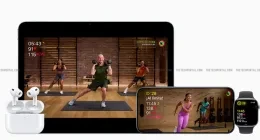Uber’s pushing out some major changes to its driver facing application. The changes primarily focus upon improving how drivers navigate the roads while driving passengers to their destinations. The main aim of the update is to ensure that drivers are able to navigate without having to rely upon mapping applications that are primarily designed for consumers.
The iOS version of the Uber driver app already had something of the sort and is receiving an update. The Android app on the other hand, is getting the feature for the first time. Previously, Uber depended upon third-party routing applications such as Google Maps and Waze. So, drivers could chose to press a “Navigate” button and get transfered to a third-party mapping app of their choice. Now though, Uber is attempting to improve the experience by coming up with something of its own rather than relying upon a bunch of third-party APIs stitched together.
The major issue with using third-party applications was that Uber had only a minimum of control over navigation. Labels for example, came in the default size and Uber could not be selective in the labels it wanted to display. So, if a location was irrelevant or maybe downright confusing to a driver and Uber wanted to hide it, it couldn’t do it. The company is addressing all these issues with its latest re-haul of the driver facing app.
Also, the cab-hailing company has taken the fact that drivers usually have their smartphones mounted right in front of their face, into account. The company has designed the user interface to take this particular fact into account and the app is designed to provide the optimum performance when viewed over that distance. The company says that it wanted to ensure that the app was easy on its driver’s eyes even after hours of driving.
The app also gives special consideration to places like Uber pick-up points at airports and UberEATS parking spots, while routing.
Drivers can still use third party options that are available for routing purposes. However, Uber wanted to make sure that if they did decide to remain in-app, they won’t be disappointed by what’s on offer. To achieve this goal, the company involved drivers in the designing process and indeed, five of them were brought in for early product design meetings with engineers. After the product was ready, the company also conducted intensive beta testing to ensure it got things right.
Meanwhile, Uber is still relying upon others including Google, for its data. What the company is doing here, is merely taking a greater role in how that data is presented before the drivers. The introduction of the new system is the one bright spot in what has been an otherwise dismal year for Uber so far. Let’s hope this change heralds the start of better times for the company.
The Tech Portal is published by Blue Box Media Private Limited. Our investors have no influence over our reporting. Read our full Ownership and Funding Disclosure →





